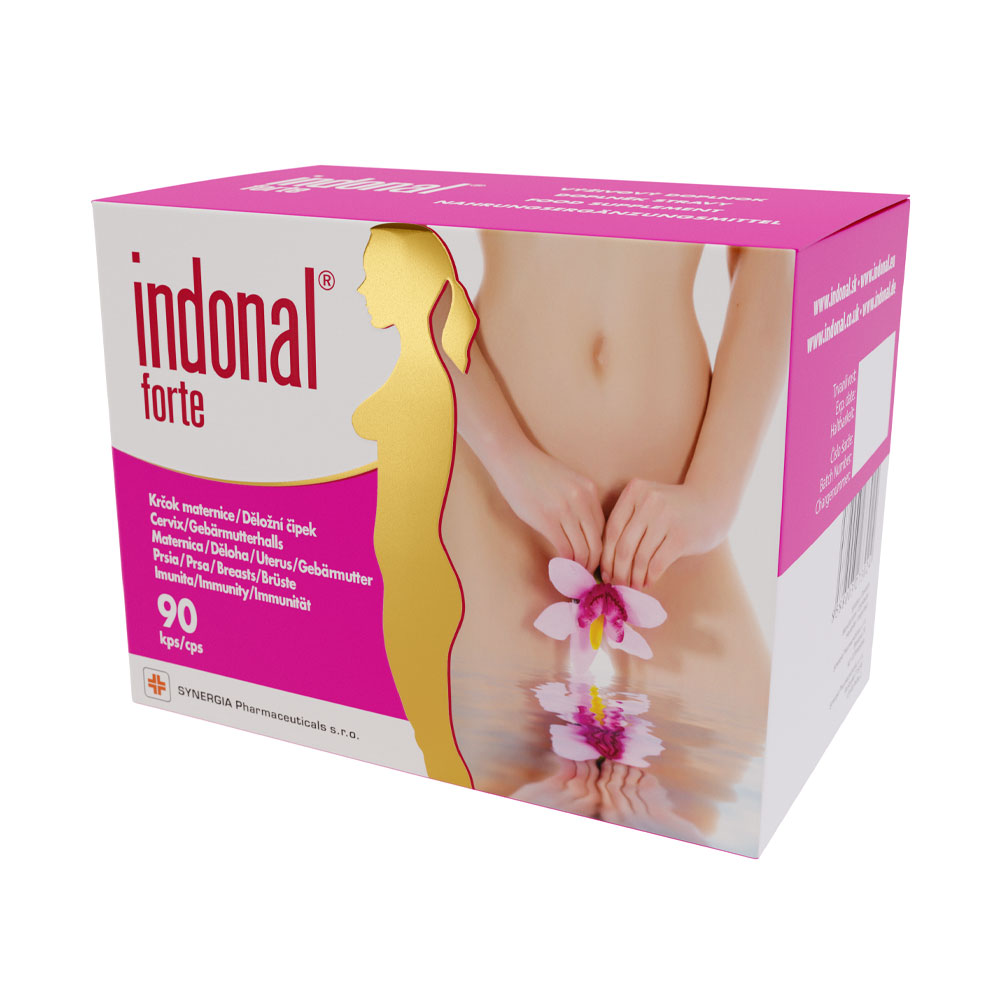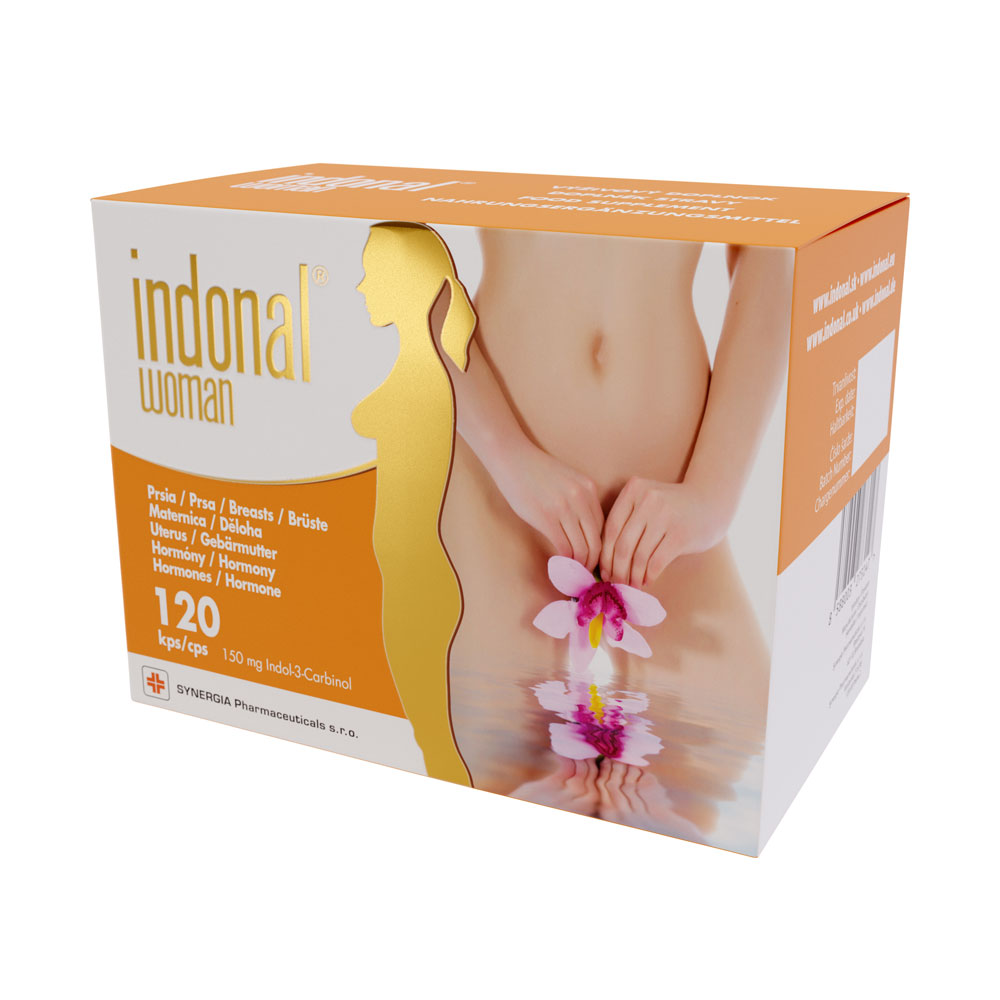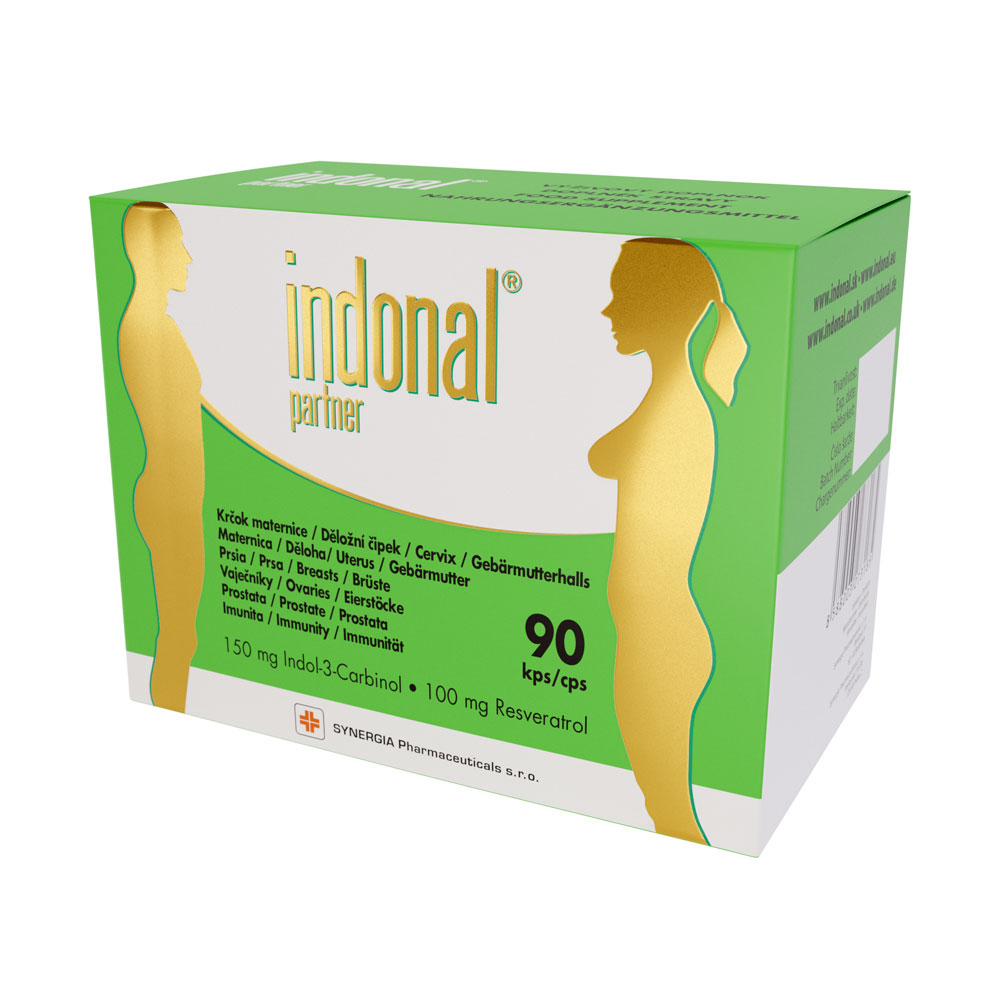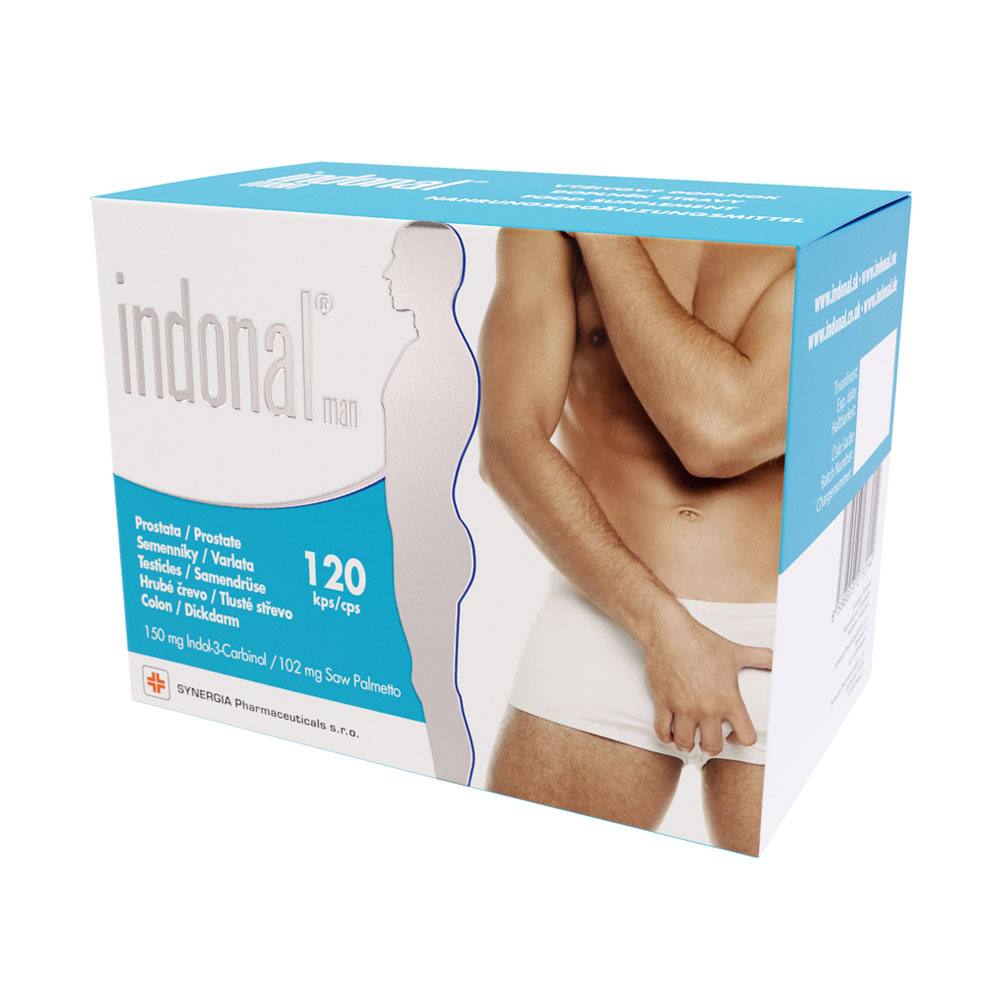Use of I3C in gynecology
1Erik Dosedla, 1Zuzana Turcsányiová
1 Gynecology and Obstetrics Clinic of the Faculty of Medicine UPJŠ, Hospital Košice-Šaca a.s. 1st private hospital, Slovak Republic
Corresponding author: MUDr. Erik Dosedla, PhD, MBA
Obstetrics and Gynecology Clinic of the Faculty of Medicine UPJŠ, Hospital Košice-Šaca a.s. 1st private hospital, Lúčna 57, 040 15 Košice
ABSTRACT
Indole-3-carbinol (I3C) is a phytochemical derived from cruciferous plants. Upon consumption, it forms several oligomeric components, including 3,3′-diindolylmethane, known for its anti-estrogenic and anti-proliferative activity. Studies demonstrate positive outcomes in various oncological diseases, highlighting beneficial changes in estrogen metabolism.
I3C finds application in preventing and treating papillomatous diseases caused by human papillomavirus, as well as in endometrial and early-stage breast cancer. Its influence on estrogen and glucose metabolism, coupled with insulin resistance reduction, positions it as a promising adjunctive treatment for polycystic ovary syndrome. Long-term use of I3C is considered safe.
INTRODUCTION
Epidemiological and prospective clinical studies reveal that populations consuming more cruciferous vegetables exhibit a lower incidence of cancer and improved biochemical indicators, such as reduced oxidative stress. Cruciferous vegetables like broccoli, Brussels sprouts, cabbage, and cauliflower owe their beneficial effects to compounds called glucosinolates, notably indole-3-carbinol (I3C).
Metabolism of I3C
Phytochemicals like I3C are obtained through the hydrolysis of glucobrazinin glucosinolate catalyzed by myrosinase. Following consumption, I3C undergoes a condensation reaction in the stomach, forming about 15 or more oligomeric components, with 3,3′-diindolylmethane (DIM) being the most studied. I3C acts as a precursor to DIM, with approximately 10% to 20% of I3C being metabolized to DIM.
Use in Gynecology
I3C’s application in gynecology is extensive. Its antiproliferative, antioxidant, and apoptotic effects make it valuable in chemoprevention. Positive outcomes are noted in breast diseases, diseases caused by human papillomavirus, and conditions like polycystic ovary syndrome. The compound’s influence on hormonal balance, alleviation of premenstrual syndrome symptoms, and positive effects on insulin resistance contribute to its potential in gynecological treatments.
Remember to adjust the subheadings as needed and maintain consistency in formatting.
Indole-3-Carbinol and PCOS
Polycystic ovary syndrome (PCOS) is one of the most widespread metabolic and reproductive diseases in women of reproductive age. Women with PCOS suffer from symptoms related to menstrual cycle disorders and excess androgens, significantly impacting their quality of life. They face an increased risk of multiple diseases, including obesity, insulin resistance, type II diabetes mellitus, cardiovascular disease, infertility, oncological diseases, and psychological issues (26). The exact cause of PCOS is not fully understood, and current treatments aim to improve the clinical picture (27). However, due to the limitations of treatments directed against symptoms like hyperandrogenism and insulin resistance, there is a need to explore new therapies that act at a specific molecular level (26).
I3C is currently the subject of ongoing research for its possible anticarcinogenic, antioxidant, anti-inflammatory, anti-apoptotic, and anti-atherogenic properties. Recent studies have focused on assessing the possible effects of I3C on various endocrine diseases, confirming its antiandrogenic and growth inhibitory effects. These effects could potentially improve the pathological features of PCOS (28). I3C and its metabolite 3,3′-diindolylmethane have been reported to ameliorate hyperglycemia-mediated oxidative stress (12). Additionally, I3C has been shown to regulate estrogen levels, contributing to overall oxidative stress regulation. Recent studies attempt to establish a relationship between I3C and metabolic diseases, including PCOS (29). Abdelbaqi et al. reported the effective antiandrogenic and antiestrogenic effects of I3C and its metabolites, alleviating hormonal disturbances in PCOS (28). Gao et al. found that I3C reduces LH and FSH production, potentially preventing fluctuations in estrogen and progesterone levels in PCOS (30). I3C improves insulin resistance and lipid profile, probably through the suppression of pro-inflammatory factors and attenuation of hyperglycemia-mediated oxidative stress often present in PCOS (12).
Cable and Co. compared the effects of I3C and I3C in combination with linagliptin in rats. The combined therapy showed inhibitory effects on TGF-β1 expression and attenuation of pro-inflammatory cytokines. They observed improvements in BMI, plasma hormone levels, lipid profiles, and tissue TBARS. I3C in combination with linagliptin appears to have a synergistic effect, potentially improving PCOS manifestations (11,31).
Conclusion
While several positive effects of I3C and its metabolites have been demonstrated in epidemiological and clinical studies, its use is limited by the lack of large prospective, randomized clinical studies determining the appropriate dose and duration for specific diseases in humans. Most work has been done in vitro or in animal models. Despite its proven beneficial effects, I3C has great potential not only in oncology but also in regulating hormonal disorders and diseases associated with glucose metabolism. Despite the positive results of multiple studies, there is still a lack of large clinical trials to establish I3C as one of the therapeutic options for PCOS. These promising results could be the subject of further clinical trials, considering I3C’s great potential and its perceived safety for use.
References
1. Katz, E., Nisani, S., Chamovitz, D.A.: Indole-3-carbinol: a plant hormone combatting cancer. F1000 Faculty Rev.,2018, 689
2. Benabadji, S.H., Wen, R., Zheng, J.B., et al. Anticarcinogenic and antioxidant activity of diindolylmethane derivatives. Acta Pharmacol Sin., 2004, (25), 666–671.
3. Fujioka, N., Fritz, V., Upadhyaya, P., et al.: Research on cruciferous vegetables, indole-3-carbinol, and cancer prevention: A tribute to Lee W. Wattenberg. Mol Nutr Food Res., 2016, 60(6), 1228–38.
4. Smetnik, A.A., Smetnik, V.P., Kiselev, V.I.: Experience with indole-3-carbinol použita k třetinovým podmínkám z prsu a k prevenci prkna. Akusherství i ginekologie, 2017, (2), 106-112.
5. Fan, S., Meng, Q., Auborn, K., et al.: BRCA1 a BRCA2 jako molecular targets pro phytochemicals indole-3-carbinol a genistein v prsou a prostatě rakoviny buněk. Br J Cancer., 2006, 94(3), 407–26.
6. Bradlow, H.L.: Review. Indole-3-carbinol as chemoprotective agent v breast andprostate cancer. In Vivo, 2008, 22(4), 441–5.
7. Mokbel, K., Mokbel, K.: Chemoprevention of Breast Cancer with Vitamins and Micronutrients: A Concise Review. In Vivo, 2019, 33(4), 983–997.
8. Bell, M.C., Crowley-Nowick, P., Bradlow, H.L. et al.: Placebo-controlled trial of indol-3-carbinol in the treatment of CIN. Gynecol Oncol., 2000, (78), 123–129.
9. Rosen, C.A., Bryson, P.C.: Indole-3-carbinol pro recurrent respiratory papillomatosis: long-term results. J Voice., 2004, (18), 248–253.
10. Naik, R., Nixon, S., Lopes, A., et al.: A randomized fáze II trial of indole-3-carbinol in treatment of vulvar intraepithelial neoplasia. Int J Gynecol Cancer., 2006, (16), 786–790.
11. Kábel, A.M., Al-Shehri, A.H., Al-Talhi, R.A., et al. Chemico-Biological Interactions, 2017, (273), 190–199.
12. Jayakumar, P., Pugalendi, K.V., Sankaran, M.: Attenuation hyperglycemia-mediated oxidativní stress by indole-3-carbinol a jeho metabolit 3, 3′- diindolylmethane v C57BL/6J mice, J Physi, J Physi , (70), 525-534.
13. Liu, X., Lv, K.: Cruciferous vegetables intake is inversely associated with risk of breastcancer: A meta-analysis. Breast, 2013, 22(3), 309-313.
14. Zhang, N.Q., Ho, S.C., Mo, X.F., et al.: Glucosinolate a isothiocyanate intakes jsou inversely spojené s prudkým rakovinou rizika: A case–control study in China. Br J Nutr., 2018, 119(8), 957-964.
15. Del Priore, G., Gudipudi, D.K., Montemarano, N. et al.: Oral diindolylmethane (DIM):Pilot hodnocení nonsurgical treatment for cervical dysplasia. Gynecologic Oncology, 2010, 116(3), 464 – 467.
16. Kumar, N., Preciado, D.: Airway Papillomatosis: New Treatments for an Old Challenge. Frontiers in Pediatrics, 2017, 7.
17. Gaudet, M.M., Britton, J.A., Kabat, G.C., et al. Cancer Epidemiol Prev Biomarkers, 2014, 13(9), 1485-1494.
18. Ambrosone, C.B., McCann, S.E., Freudenheim, J.L., et al.: Breast cancer risk v premenopausal women is inversely asociated s consumption of broccoli, a zdroje z isothiocyanates, ale není modifikováno. J Nutr., 2004, 134(5), 1134-1138.
19. Martín-Ruiz, A., Peña, L., González-Gil, A. et al. BMC Cancer, 2018, 18(1).
20. Takahashi, N., Stresser, D.M., Williams, D.E., et al. Food Chem Toxicol., 1995, 33, 841-850.
21. Rahman, K.M., Aranha, O., Sarkar, F.H.: Indole-3-carbinol (I3C) induces apoptosis in tumorigenic but not in nontumorigenic breast epithelial cells. Nutr Cancer., 2003, 45(1), 101–12.
22. Matsuzaki, Y., Koyama, M., Hitomi, T., et al.: Indole-3-carbinol activates the cyclindependent kinase inhibitor p15gene. FEBS Lett., 2004, 576(1–2), 137–40.
23. Lee, C. M., Choi, Y. J., Park, S.-H., et al. Food and Chemical Toxicology, 2018, 118, 119–130.
24. Kunimasa, K., Kobayashi, T., Kaji, K., et al.: Antiangiogenní účinky indole-3-carbinolu a 3,3′- diindolylmethanu jsou spojeny se svými různými regulacemi z ERK1/2 a Akt in tube -forming HUVEC. The Journal of Nutrition., 2010, 140(1), 1–6.
25. Phuah, NH, Nagoor, NH: Regulace of microRNAs by natural agents: new strategies in cancer therapies. Biomed Res Int., 2014, 2014, 804510.
26. El Hayek, S., Bitar, L., Hamdar, L.H.et al.: Polycystic Ovarian Syndrome: An Updated Overview, Front. Physiol., 2016, (7), 124.
27. El-Sharkawy, A.A., Abdelmotaleb, G.S., Aly, M.K. et al.: Effect of metformin on sleep disorders in adolescent girls with polycystic ovarian syndrome, J. Pediatr. Adolesc. Gynecol., 2014, (27), 347-352.
28. Abdelbaqi, K., Lack, N., Guns, E.T. et al.: Antiandrogenní a growth inhibitory účinků of ring-substituted analogs of 3,3′-diindolylmethane (ring-DIMs) in hormoneresponsive LNCaP human prostate cancer cells, Prostate, 2011, (71), 14
29. Enríquez, J., Velázquez-Cruz, R., Parra-Torres, A. et al.: Antiestrogenní aktivita indol-3-carbinolu v neonatal rat osteoblasts je spojen s estrogen receptorem antagonist 2-hydroxyestradiol, J. Endocrinol. Invest., 2016, (39), 1149-1158.
30. Gao, X., Petroff, BK, Oluola, O. et al.: Endocrine disruption by indole-3-carbinol a tamoxifen: blockage of ovulation, Toxicol. Appl. Pharmacol., 2002, (183), 179-188.
31. Kabel, A.M., Alharthi, E.A., Alshehri, R.K., et al.: Indole-3-carbinol: A Promising Hope for Cancer Therapy. Journal of Cancer Research and Treatment, 2018, 6(1), 25-27.










